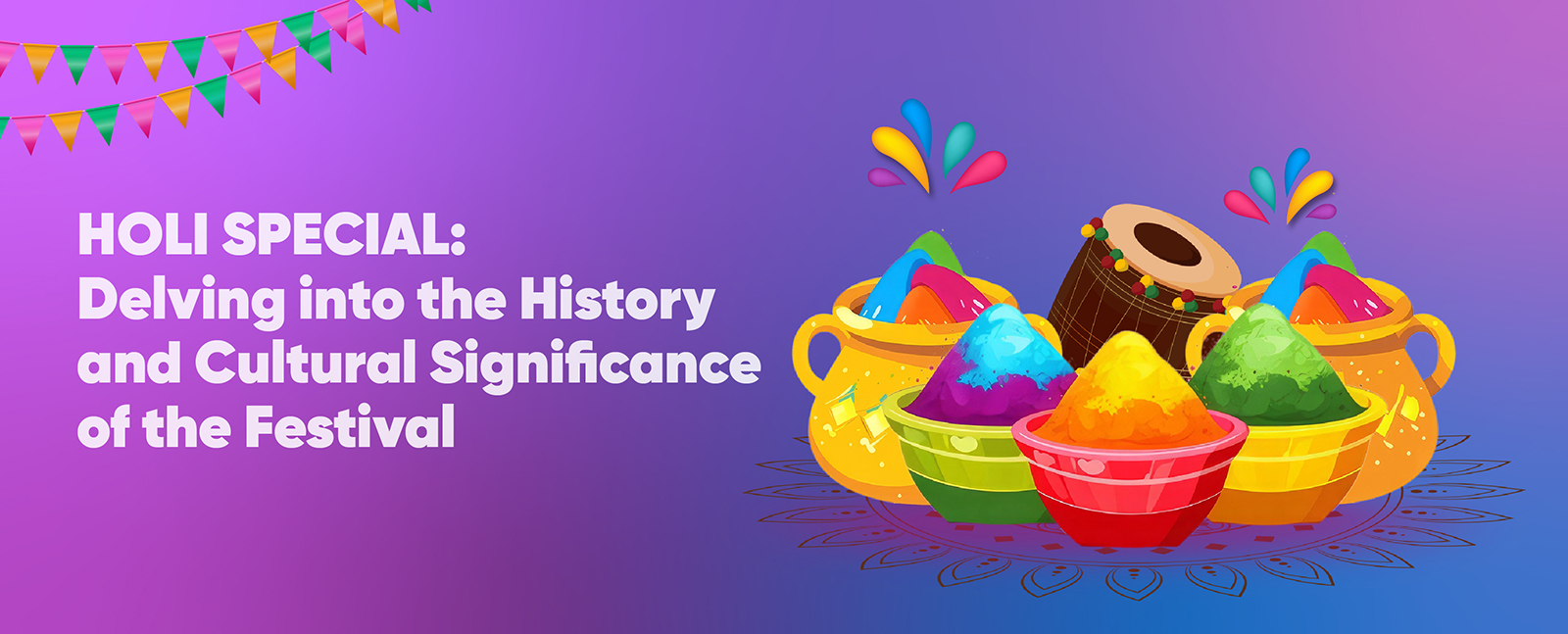As spring paints India in vibrant hues, the nation gears up for one of its most joyous and colorful festivals – Holi. More than just a riot of colors, Holi boasts a rich history and deep cultural significance, woven into the very fabric of Indian society. Let’s embark on a journey to explore the fascinating past and enduring meaning of this beloved festival.
Enquiry Form
Legendary Origins: Triumph of Good over Evil
Holi’s roots lie deep in Hindu mythology, with several legends associated with its origins. One popular tale narrates the story of Prahlad, a devout boy who defied his demon king father, Hiranyakashyap. Hiranyakashyap, immune to harm from fire or water, plotted to kill Prahlad in a bonfire. However, his loyal sister Holika, immune to flames herself, entered the pyre with Prahlad. Divine intervention protected Prahlad, while Holika perished. The burning of Holika, commemorated on the eve of Holi (Choti Holi), symbolizes the victory of good over evil.
Holi Rituals: A Celebration of Renewal
Holi festivities unfold over two days. Choti Holi, or Holika Dahan, begins with the symbolic burning of Holika’s effigy. People gather around bonfires, singing and dancing, signifying the cleansing of negativity and the welcoming of spring.
The following day, Holi proper, explodes in a vibrant display of color. People of all ages and backgrounds take to the streets, armed with powdered pigments (gulal) and water guns (pichkaris). Laughter fills the air as friends, families, and even strangers drench each other in a kaleidoscope of colors. This throwing of colors transcends social barriers, fostering camaraderie and a sense of community.
Beyond the Colors: A Celebration of Life
Holi is more than just a visual spectacle. It signifies the arrival of spring, a time of renewal and rebirth. The vibrant colors symbolize fertility, abundance, and the joy of life. Sharing sweets like Gujiya and Dahi Vada adds to the festive spirit. The playful throwing of colors breaks down social inhibitions, promoting forgiveness and reconciliation.
Holi transcends religious boundaries as well. People of all faiths participate in the festivities, strengthening the social fabric of India’s diverse communities. The festival is a reminder of the impermanence of negativity and the enduring power of love, joy, and togetherness.
A Global Phenomenon: Holi Beyond Borders
Holi’s vibrant spirit has transcended geographical boundaries. Celebrated by the Indian diaspora across the globe, the festival brings a touch of India’s rich culture to faraway lands. Holi festivals are held in major cities worldwide, attracting people from all walks of life.
Holi’s vibrant spirit is a testament to the enduring power of tradition. Just as Holi celebrates the blossoming of spring and the triumph of good over evil, Podar Smarter Schools embodies a similar spirit of renewal in education. They bridge the gap between age-old values and a contemporary, international outlook. By empowering schools with innovative teaching methods and fostering a love for learning, Podar Smarter Schools pave the way for a future where every child, regardless of background, can blossom and reach their full potential. So this Holi, let’s celebrate the colors of tradition, embrace new beginnings, and shower our children with the gift of knowledge. Happy Holi!

